Clifford Garstang's Blog, page 129
June 11, 2011
Blog re-redesign
You'll notice a change. I decided the Chinese characters in the background were too busy and, more importantly, they made scrolling difficult. I'm not completely sold on the new new look, but we'll give it a try for a while.
Published on June 11, 2011 06:04
The New Yorker: "Above and Below" by Lauren Groff
 June 13 & 20, 2011: "Above and Below" by Lauren Groff
June 13 & 20, 2011: "Above and Below" by Lauren GroffThe last of the three stories in the Summer Fiction issue is "Above and Below" by Lauren Groff. (Groff has a novel coming out but I gather from the interview that this isn't excerpted from it.) I want to say it's the best of the three, but they're all so different that I guess I won't say that, and, despite all its great strengths, I thought it went on a little long and I'm a little unclear as to what it's about.
The story is a classic "hero goes on a journey" story, but with the twist that she doesn't get very far. What's also a bit unusual here is the episodic nature of the piece—she has one experience after another, each unrelated to the next. They accumulate, certainly, but it's almost as if they are their own little stories within the framework of the whole: the squat at the end; the tent city with the woman and her kids; the cleaning job with Euclid; and so on. (There are links, actually, but they're more psychological than plot-related.)
But the plot: a woman in graduate school who grew up quite poor (and has issues with her distracted mother), has broken up with her boyfriend and when she loses university funding her fragile finances crumble. She moves what few belongings she can in her old station wagon and hits the road—bound for where she doesn't know. She finds various ways to survive. She showers in the gym of a beachside condo complex. She gets food from a church "soup kitchen." She goes dumpster diving. When she finds a five dollar bill (how convenient!) she goes to a bar and lets herself get picked up by a guy and after he falls asleep she raids his refrigerator. When her car gets stripped, she's even more homeless, but she stumbles upon a job cleaning nightclubs which lasts for a while until her boss, Euclid, has a stroke. She winds up in a tent city of homeless people watching the kids of a single mother who works in a fast food joint—until she gets fired and then arrested for prostitution. So she winds up back at the campus where she started and stumbles upon people scavenging discarded furniture from campus housing, and she hooks up with them, winding up in a Prairie House that is a "squat," the kitchen of which she cleans, using the skills she acquired during her short-lived cleaning gig.
The whole story has been to get us to this house where she wanders into the prairie, feeling incredibly alone but also aware of the teeming life there: "There was no relief in the sky vaguely filmed with stars, a web vaster than she could imagine. There was nobody who could save her, nobody who could deliver her gently back to the solace of people."
And then, a jump forward in time to the difficult birth of her daughter, which brings back the memory of that night on the prairie, and then this: "How delicate the things that tie us to one another. The hands in her flesh, her own crossed on her chest, her daughter's tiny fists drawn up into the air." This is, I suppose, the link between mother and daughter, the link that was broken with her own mother, the link that was broken with all people. [I don't get the hands crossed on her chest, though; that makes me think she's dead, although that wouldn't happen until she's placed in a coffin, so surely that's not right.]
Reactions?
Published on June 11, 2011 05:44
The New Yorker: "Asleep in the Lord" by Jeffrey Eugenides
 June 13 & 20, 2011: "Asleep in the Lord" by Jeffrey Eugenides
June 13 & 20, 2011: "Asleep in the Lord" by Jeffrey EugenidesThis is the second of three pieces of fiction in the Summer Fiction issue.
As we learn in the interview with Eugenides, this "story" is an excerpt from a forthcoming novel. As excerpts go, however, I think this one works well as a short story. Eugenides also says that the basis of the story is autobiographical in that he, like the character Mitchell, took a year after college to travel and volunteered at the Mother Theresa Home in Calcutta.
So: Mitchell is in Calcutta as part of his post-graduate year of spiritual discovery. He's volunteering at Mother Theresa's Home for the Dying Destitutes (Monday through Friday, as if the Destitutes took the weekend off). There's seems to be a steady stream of doctors and other volunteers at the home, some for extended periods, some not. Mitchell is trying to do good works and associate with people doing good works. He reads a lot of Thomas Merton and other spiritual writers. Meanwhile, he has to deal with other travelers, most of whom have less lofty goals.
Aside: I loved Mitchell's interaction with the other travelers. Having done a shorter version of his trip—in 1978, after I finished my Peace Corps service—I found the café and the hostel experience completely real. Or plausible, at any rate.
But the story is really about Mitchell overcoming his fears in the hospital. At first he's only willing to dispense medicine—bathing and other more personal interaction is something he can't handle. Until he has to, and then he's faced with a bigger fear from which he flees: "And Mitchell began to move. Already knowing that he would regret this moment for a long time, maybe for the rest of his life, and yet unable to resist the sweet impulse that ran through his every never, Mitchell headed toward the front of the Home . . . and up the steps to the bright, fallen world above." And he keeps running, continuing his spiritual journey.
Based on this excerpt, I'm interested in reading the novel—so it has done its job.
Published on June 11, 2011 04:45
June 10, 2011
The New Yorker: "Home" by George Saunders
 June 13 & 20, 2011: "Home" by George Saunders
June 13 & 20, 2011: "Home" by George SaundersThe summer fiction issue is pretty excellent. All three stories are terrific, and there are some other nice features, as well.
The first story—at least in the order they appear on my Kindle—is "Home" by George Saunders. It reminded me of "Soldier's Home" by Ernest Hemingway, although maybe that's inevitable for any story that is about a soldier's homecoming. Here, Mike has come home from war in the Middle East to find his foul-mouthed mother living with Harris, her new man, a lazy liar. Harris and Mike's mother make quite a pair. Mike goes to visit his sister Renee, who has a new baby. First, Mike eavesdrops on Renee, her husband, Ryan, and Ryans parents—an opportunity for Saunders to reveal character and have some fun at the same time.' When he finally reveals himself to Renee, she won't let him in—because she's ashamed of her family (justifiably, it would appear). Before he goes, though, she asks, "Did you do it?" Huh? So, now we know that Mike did something, or was accused of doing something.
When Mike gets back to his mother's house, she and Harris are being evicted for non-payment of rent. He puts a temporary stop to the eviction, and then goes to visit his ex-wife and kids, but his wife's new husband tells him it's after midnight and too late for a visit (it's actually only 9pm), so he agrees to come back the next day. (The guy is classic Saunders, explaining how challenging his affair with Mike's wife was: "It was hard for me because I felt like a shit, and it was hard for her because she felt like a shit." He wants Mike's sympathy because of how bad they both felt.) The next day, after a confrontation with the sheriff at his mother's house, they all go over to Renee's. "Oh, this will be funny," thinks Mike, and it is. Among other things, since Renee and Ryan won't let him hold the baby, he breaks a pitcher of tea. When he calls to apologize, she says he's going to buy a new pitcher. "No," he says. "I don't think I'll be doing that." Hah! And when Renee asks him where he'll go, he says, "Home"—the title of the story.
And eventually we find out Mike's story—that he did something during the war that got him court-martialed. And you get the sense that he might not be done.
Saunders, it seems to me, is exploring a few different themes. What does home mean? Mike's mother lives in a dump--until she's evicted--but Renee and Mike's ex-wife both live in very nice houses. Home also means family, but it isn't clear that family means too much here. And at the end of the story, Mike is headed home, which might be heading back to the feelings he had in the war. Then there's also the problem of becoming desensitized to the pain you're causing--Mike in the war, plus everyone else in the story.
For a quick interview with Saunders about the story, check out Summer Fiction: George Saunders.
I'll be dealing with the other stories shortly.
Published on June 10, 2011 12:26
June 9, 2011
Get Published! Publishing the Short Story or Essay -- Writers.com
 There's still a little room left in the Publishing the Short Story or Essay class at Writers.com. We start next Monday, so sign up before then.
There's still a little room left in the Publishing the Short Story or Essay class at Writers.com. We start next Monday, so sign up before then.It's all about getting your short story or essay ready to be published, figuring out where the best markets are for your work, and presenting it in the best light.
Take a look at the course description and see if it's for you!
Published on June 09, 2011 12:47
Eco-confabulations and other bloopers in literature
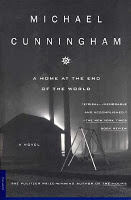 I'm sure this has happened to you. You're reading a book and the author includes some detail that you KNOW is wrong. Maybe you even Google it to be sure, and you wonder how such misinformation slipped passed the watchful eye of the editors. (I'm more finely attuned to typos and grammar errors, but I occasionally notice other mistakes and anachronisms.)
I'm sure this has happened to you. You're reading a book and the author includes some detail that you KNOW is wrong. Maybe you even Google it to be sure, and you wonder how such misinformation slipped passed the watchful eye of the editors. (I'm more finely attuned to typos and grammar errors, but I occasionally notice other mistakes and anachronisms.)Here's a very interesting essay from Places @ The Design Observer Group on this topic: A Home Before the End of the World. The author, Adelheid Fischer, noticed some interesting errors ("eco-confabulations") in the description of the natural world in Michael Cunningham's A Home at the End of the World
 . (Armadillos and Joshua trees in Phoenix? Apparently not.) The essay asks the question: Do these mistakes matter? The author isn't concerned about these mistakes as a literary matter (that would have been my first thought). Rather, the concern is for the environment:
. (Armadillos and Joshua trees in Phoenix? Apparently not.) The essay asks the question: Do these mistakes matter? The author isn't concerned about these mistakes as a literary matter (that would have been my first thought). Rather, the concern is for the environment:The least we can do — for the survival of the world and for the thriving of our own species — is to learn the real identities of the organisms that surround us.An interesting thought. Reactions?[image error]
Published on June 09, 2011 07:20
June 8, 2011
Reading: Man Martin and Jamie Iredell
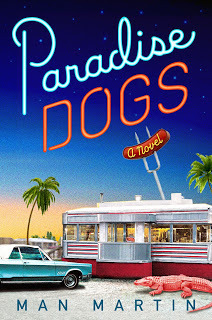 I had the pleasure last night of attending a reading at Over the Moon Bookstore & Artisan Gallery in Crozet, VA, featuring two writers from Atlanta, Man Martin and Jamie Iredell who were in the area for a couple of stops including an appearance tonight in Charlottesville at WriterHouse.
I had the pleasure last night of attending a reading at Over the Moon Bookstore & Artisan Gallery in Crozet, VA, featuring two writers from Atlanta, Man Martin and Jamie Iredell who were in the area for a couple of stops including an appearance tonight in Charlottesville at WriterHouse.The two writers couldn't be much different, although they are long-time friends from grad school.
Jamie read bits from two books, The Book of Freaks
 and Prose, Poems, A Novel
and Prose, Poems, A Novel . They consist of short sections, some admittedly autobiographical, that might be called prose poems or flash fiction.
. They consist of short sections, some admittedly autobiographical, that might be called prose poems or flash fiction.Then Man "read," although he didn't read--he recited. I've watched poets do this, but I don't think I've ever seen a novelist do it. He was telling the story of his novel but then he would launch into long memorized passages from his second novel, Paradise Dogs
 , the publication date for which happened to be yesterday. Man considers himself a humorist, and that was evident from the story of this book. If you like funny novels, I have a feeling you'll like this one.
, the publication date for which happened to be yesterday. Man considers himself a humorist, and that was evident from the story of this book. If you like funny novels, I have a feeling you'll like this one.I knew Man a little from the Sewanee Writers Conference, and Jamie recognized my name from a story I'd had in New South a couple of years ago because he used to work on the magazine. And since a bunch of my WriterHouse friends were there, we all went out after the reading for wine and tapas (there's a nice little place in Crozet that has very good tapas and a decent wine selection, Da Luca Cafe and Wine Bar) and generally had a good time talking about writing and, ahem, other writers.[image error]
Published on June 08, 2011 05:36
June 5, 2011
In This Light: Images -- Inspiration In an Uncharted Country
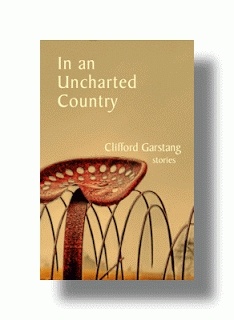
Writer Dory Adams asked me to write a short essay for her wonderful blog about images and narrative, In This Light. And here's the result: "Images: Inspiration In an Uncharted Country."
Thanks to Dory for the opportunity. It was a lot of fun to think about some of the ways images--in all the meanings of the word--impact writing. And I think I really only scratched the surface!
Take a look, and while you're there browse the site.
Published on June 05, 2011 11:22
June 3, 2011
The New Yorker: "Clever Girl" by Tessa Hadley
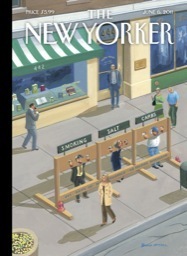
June 6: "Clever Girl" by Tessa Hadley
I may be forgetting someone, but it seems to me that TNY has published more stories by Tessa Hadley than anyone else over the last couple of years. If I didn't think this one was so good, I might be annoyed by that. (In fact, as we learn from the interview with Hadley, this story is one of a series about the same character, Stella.)
A girl whose mother remarries isn't terribly happy about the new house they've moved to, even though it sounds nicer than the place they were living before. And she doesn't get along with her stepfather, although he treats her mother well and he works hard. She's bright, but doesn't care much for school. In her new neighborhood, she becomes friends with a girl her age, Madeleine, but they don't really have that much in common.
When the girl's mother is in the hospital having a baby, she and the stepfather are thrown together. She's struggling with a physics problem and he tries to help. He struggles with it and gives up in frustration, but in the process the answer comes to her. Not only does she understand that she's clever, but she also sees that her stepfather is trying to be helpful: "Something had happened; I could see all the elements of the problem differently now, as if they had arranged themselves naked under a bright light." And she's not just talking about the physics problem.
That's about it. A nice epiphany at the end. Along the way, Stella and Madeleine develop a "tree cult" in which they convince themselves that the stumps of trees that were cleared for their housing development are alive, and those stumps look like metaphors for the girls themselves.
Published on June 03, 2011 16:36
Book Review: The Moral Lives of Animals, by Dale Peterson
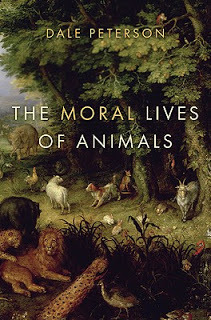 The Moral Lives of Animals
The Moral Lives of Animals

Dale PetersonBloomsbury Press (2011)
Having read some recent animal behavior books (such as Temple Grandin's Animals Make Us Human), I expected this one to be something like those. And it is, in a way, but it's far more, because the author, Dale Peterson, clearly has in mind homo sapiens as one of the animals he's talking about. Furthermore, while he's exploring particular aspects of moral behavior in humans and other large mammals, he really seems to be aiming toward a moral conclusion that mostly applies only to humans.
Because whales are the subject of some of Peterson's observations, it's appropriate that he uses the great novel Moby Dick as something of a guide through his subject. He even presents quotations from the book as epigrams to each chapter. (My favorite of these might be the one he uses for the Authority chapter: "Whales in the sea God's voice obey.") Of course, Ahab and the other characters from the novel—although they are fictional—provide additional fodder for the discussion of human moral principles.
The book is organized into four parts, each answering a question about morality: Where Does Morality Come From? (In which we learn that there are two kinds of morality—rules and attachments.) What Is Morality? (The Rules.) What is Morality? (The Attachments.) Where is Morality Going?
He begins by noting the linguistic differences in how animals and humans are referred to, and relating that to different ways of viewing animals. The First Way, he suggests, is that "animal minds [are] intelligent entities constructed in humanoid form. The Second Way, which he attributes to Descartes, is that animals have no reason and are essentially "machines made by nature. But there's a Third Way, associated with Charles Darwin, which follows from the shared evolutionary history among many species, which he believed extended to a mental continuity and even something approaching morality in animals other than humans.
He then proceeds to examine what the moral rules are—for animals as well as humans—when considering Authority, Violence, Sex, Possession, and Communication, followed by the moral attachments—Cooperation, Kindness, Duality, Flexibility, and Peace. In each case, in addition to understanding where the concepts come from for humans, Peterson gives numerous examples of studies of various "intelligent" animals such as whales, elephants, and chimps, as well as anecdotes about the behavior of his own dogs. We learn, then, about authority hierarchies among various animals, particularly violent behavior and its consequences, rules associated with sex and ownership, and the means of communication. We also learn that some species exhibit cooperation and kindness.
Near the end of the book, Peterson explores duality—the differences, or arguable differences, between males and females, between primary references to rules-based morality or attachments-based morality. Differences take many forms, too. Male and female elephants communicate differently, for example. There is a vast size difference between male and female elephants, also, and an even bigger difference between male and female whales. (And yet female spotted hyenas are larger than the males.) These differences contribute to different behaviors. On a related subject, Peterson explores flexibility, and one fascinating study is the evolutionary differences between chimpanzees and bonobos. These apes were the same species 2.5 Million years ago, but for reasons that we don't know two groups became geographically separated and had limited interaction thereafter. Consequently, their evolutionary paths diverged. One of the differences that arose is that while the chimps remained patriarchal, bonobos developed into mostly matriarchal groups, and that seems to explain a number of behavioral differences between these two closely related species today.
The final chapter of the book takes the story in a surprising direction. It isn't at this point about the behavior of whales and elephants, but about the war that humans have been carrying out against animals for some time, with the result that most mammals of North America larger than 90 lbs.—about 40 species—became extinct in the late Pleistocene epoch (at the time humans emerged). The same was true in South America and Australia. Elephants fared better because human populations in Africa and Southern Asia were relatively low, but that relative safety came to an end when humans acquired rifles. In the last 30 years alone, the world elephant population has been cut in half.
Peterson imagines human contact with life forms from other planets, which, given the vast numbers of such planets, is increasingly likely. But he's not optimistic about the results. "If we reached them before they reached us, we would do so probably because we're technologically more advanced than they. If that's the case, what indicates that we'll treat them any differently from the way we've treated every other creature with sentience already here on this planet. . . And if the extraterrestrials should reach us first because they're technologically more advanced than we, what in our experience suggests that their high intelligence and great technology would be accompanied by great wisdom and kindness or would automatically promote high sympathy for another species?" And so, he suggests, "the best hope we have is to demonstrate with our own example that, given time, we can achieve a greater wisdom about ourselves and our relationship with the rest of the natural world down here, on this planet."
That's the Peace he's talking about. It's a somewhat surprising direction for the book to have taken, but I believe that's basically the author's point. And while he doesn't posit an inter-species golden rule, that's the basic lesson I take from the book: Do unto other species as you would have other species do unto us.
Published on June 03, 2011 11:55



